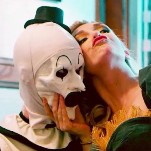Watching Mary Tyler Moore in Long-Ago Real Time
In DepthToday, when every 26-year-old woman I pass on my West Village street seems to have her own start-up, and women’s empowerment conferences are redundantly full of millionairesses in Manolos with daily blow-outs and triplex brownstones in the world’s shiniest borough—Brooklyn, which used to be known for grandmothers in housedresses wielding gefilte fish grinders—it’s hard for anyone but a Boomer to remember that there was a time when a young woman having a career in the city meant being a zesty, super-competent, holding-it-all-together and rolling-your-eyes-at-the-assininity-around-you glorified assistant to the man in charge.
But that’s what it was like at the very end of the ’60s and very beginning of the ’70s. The term “Gal Friday” (for real!) had only recently been retired from Help Wanted ads, and female professionalism was still a bit of an oxymoron—most girls I knew wanted to be witty goddesses dating rock musicians, not 9-to-5’ers, and the smart girls who did want the latter knew the push-back was intense. And that is why The Mary Tyler Moore Show—which debuted in that bright first year of a new decade—meant so much to us all.
First of all, there was Mary herself—a brilliant comic actress with an expressive range that zigzagged from earnestness to incredulousness to befuddlement to shrewd irony and back; a charmingly almost-shrill voice; fine-featured beauty topped by that big near-black hair—and a knockout figure that could only come from her many years of dancing. But mostly there was her air of decency and integrity. It was glowing. Can decency and integrity glow? With her, it did. In the show—whose rousing, not-quite-corny theme song featured the hook “You’re gonna make it after a-all!”—she was Mary Richards, who came from a small town in Minnesota to be associate producer at Minneapolis’s WJM-TV’s six o’clock news. She called her boss (the charmingly gruff Ed Asner) “Mr. Grant” even though she held the whole office together. Women have always been great at that, but when the show premiered that was mostly all that young women in offices—without commensurate perks or titles—were allowed to do. She lived alone-but-not-lonely, a concept city girls had struggled to master for a few years but which she legitimized, in an apartment. And her best friend, Rhoda Morgenstern (the wonderful Valerie Harper) lived upstairs. Or was it downstairs? “Mare? Mare?!” Rhoda would implore—as out-there as Mary was composed, as self-deprecating as Mary was reservedly puzzled—when she entered Mary’s apartment to shpiel out the latest wrinkle in her life.
Mary Richards took the Rona Jaffe-ian notion of a New York “career gal” (living with roommates, looking for a man, crying over heartbreak) and made it hip. At work she was palpably better than pompous Ted Baxter, the bloviating news “star” that the crew not-so-secretly laughed at, and an optimistic foil to the perennially woebegone news writer Murray Slaughter (Gavin MacLeod). The invisible asterisk on her work character was that, once the doors really started opening for women (the show debuted a year before Ms. magazine rang in a new era of women’s-liberation-going-mainstream but the movement had already started), she would advance the way she was destined to, beyond her frequent protestations: “But Mister Gra-ant…” Of course she was smarter and more sensible than the guys in the office. We all knew that and part of the show’s satisfaction was that we knew they knew it, too.
-

-

-

-

-

-

-

-

-

-

-

-

-

-

-

-

-

-

-

-

-

-

-

-

-

-

-

-

-

-

-

-

-

-

-

-

-

-

-

-








































